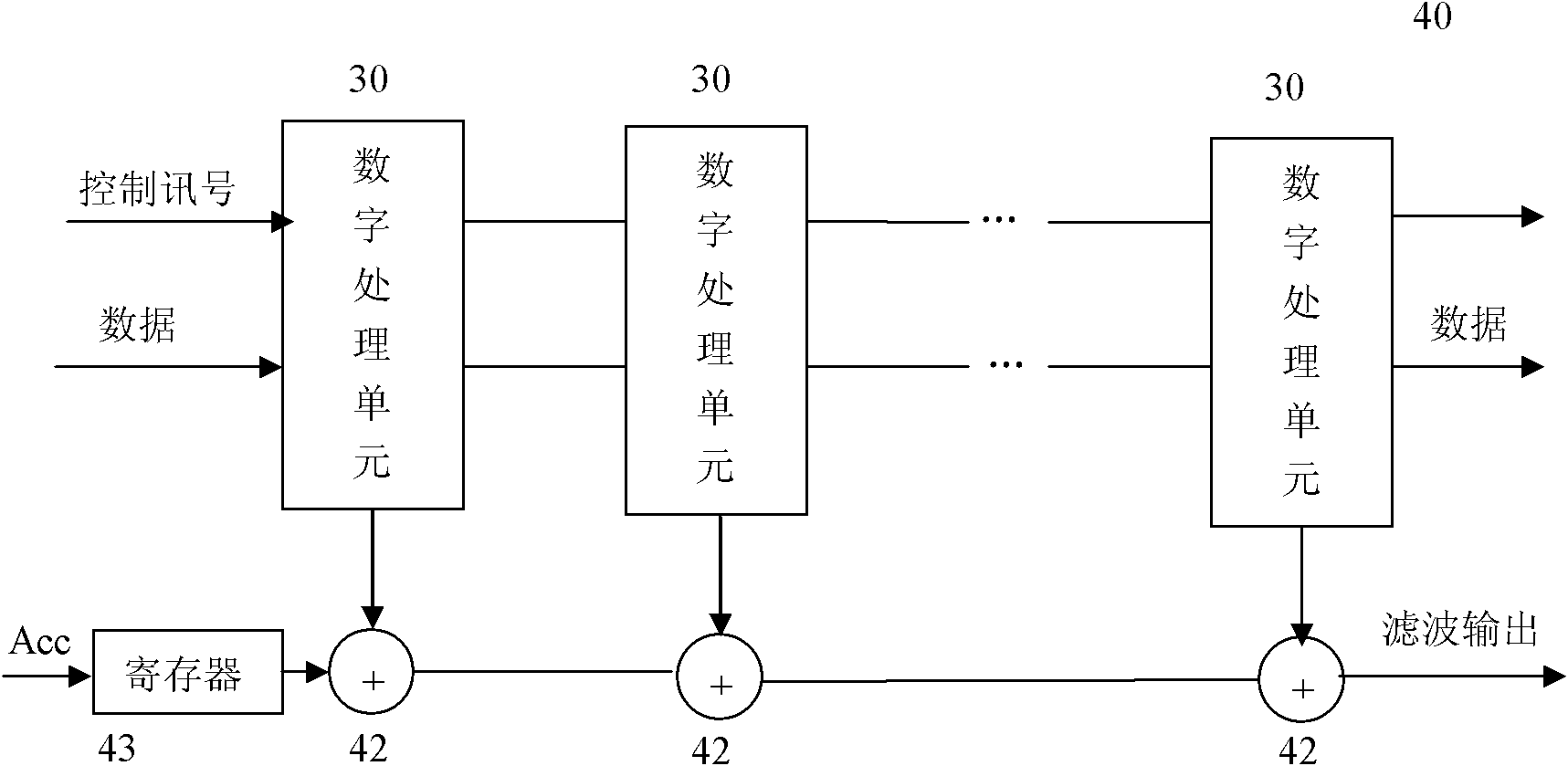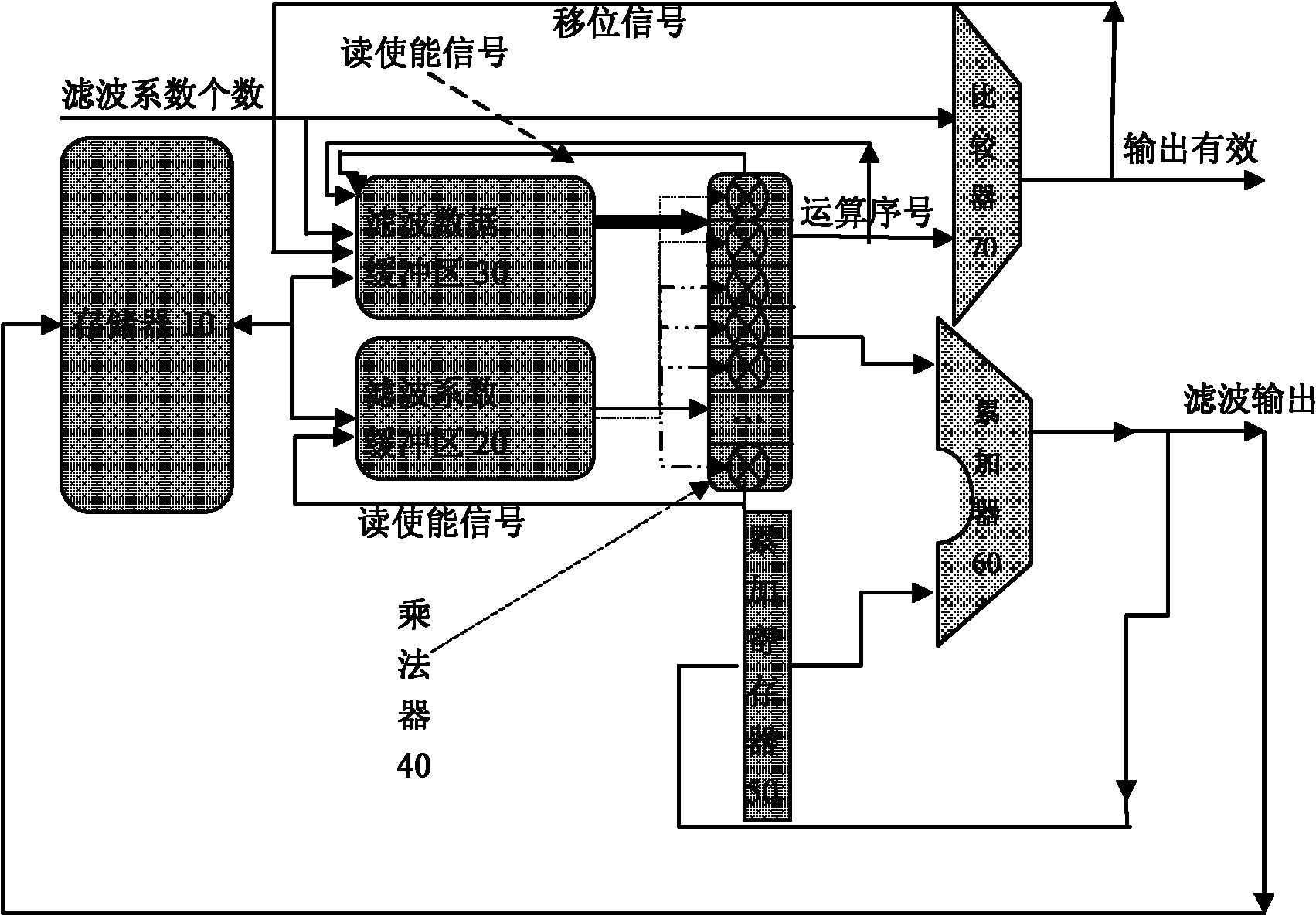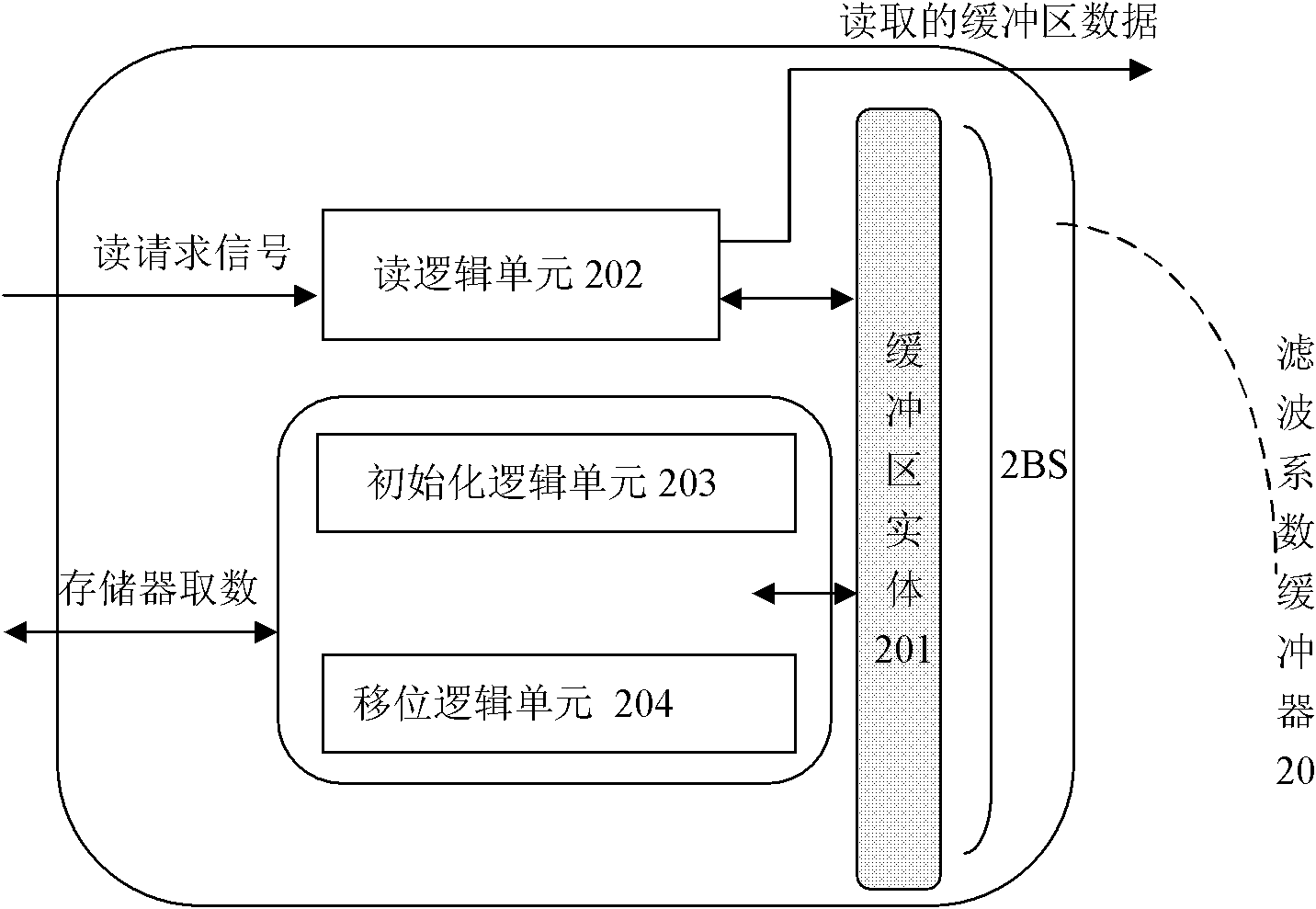Finite impulse response (FIR) filter
A limited pulse and filter technology, applied in the field of digital signal processing in the electronics industry, can solve the problems of limited number of digital processing units, low efficiency of use of data to be filtered, lack of application flexibility, etc., to avoid inaccurate calculations performance, reduce the number of visits, and save computing time
- Summary
- Abstract
- Description
- Claims
- Application Information
AI Technical Summary
Problems solved by technology
Method used
Image
Examples
Embodiment Construction
[0040] In order to make the object, technical solution and advantages of the present invention clearer, the present invention will be described in further detail below in conjunction with specific embodiments and with reference to the accompanying drawings. While illustrations of parameters including particular values may be provided herein, it should be understood that parameters need not be exactly equal to the corresponding values, but rather may approximate the values within acceptable error margins or design constraints.
[0041] The applicant found that the algorithm of the FIR filter in Equation 1 can be expanded to the following result:
[0042]
[0043] For the expansion results of the FIR filter algorithm shown above, the use of filter coefficients has the following rules:
[0044](1) With regard to the column where each dotted line box is located, each multiplier uses a filter coefficient and BS data to be filtered in the dotted line box to perform calculatio...
PUM
 Login to View More
Login to View More Abstract
Description
Claims
Application Information
 Login to View More
Login to View More - R&D
- Intellectual Property
- Life Sciences
- Materials
- Tech Scout
- Unparalleled Data Quality
- Higher Quality Content
- 60% Fewer Hallucinations
Browse by: Latest US Patents, China's latest patents, Technical Efficacy Thesaurus, Application Domain, Technology Topic, Popular Technical Reports.
© 2025 PatSnap. All rights reserved.Legal|Privacy policy|Modern Slavery Act Transparency Statement|Sitemap|About US| Contact US: help@patsnap.com



